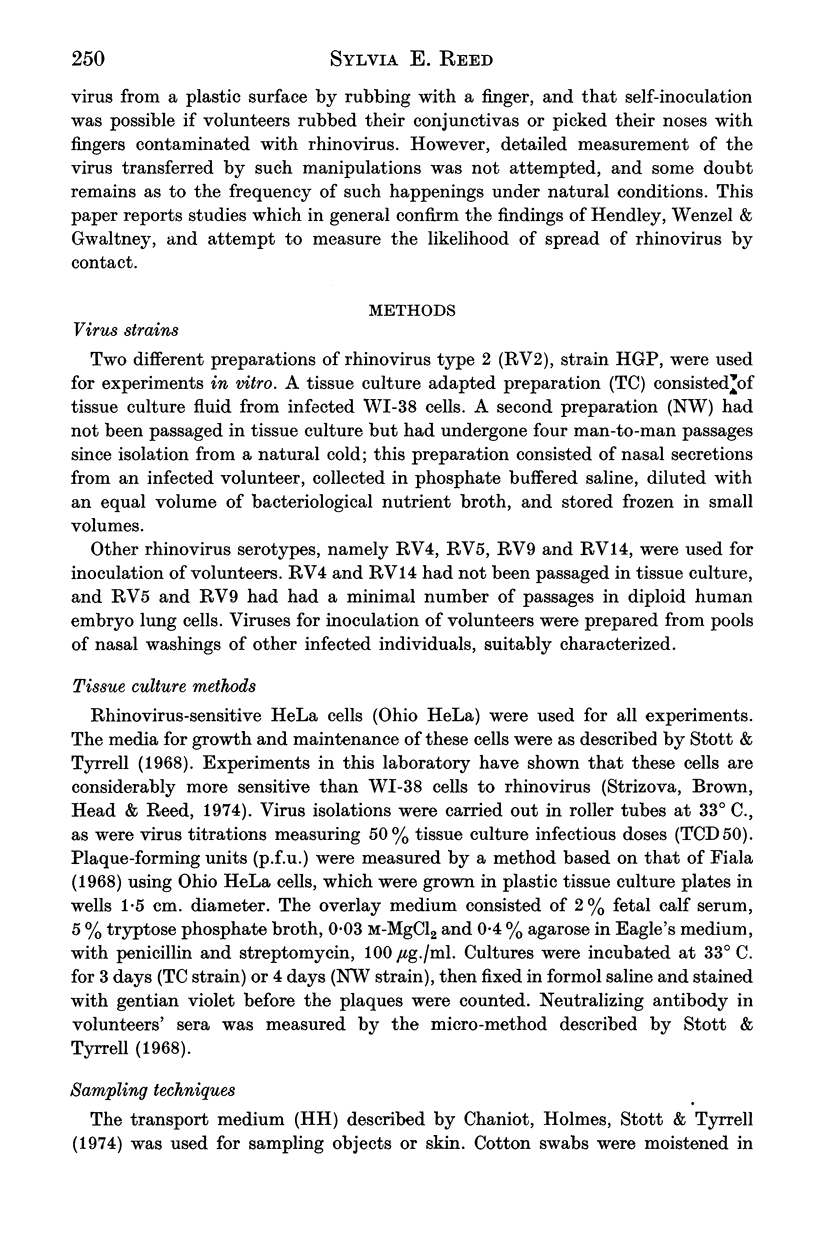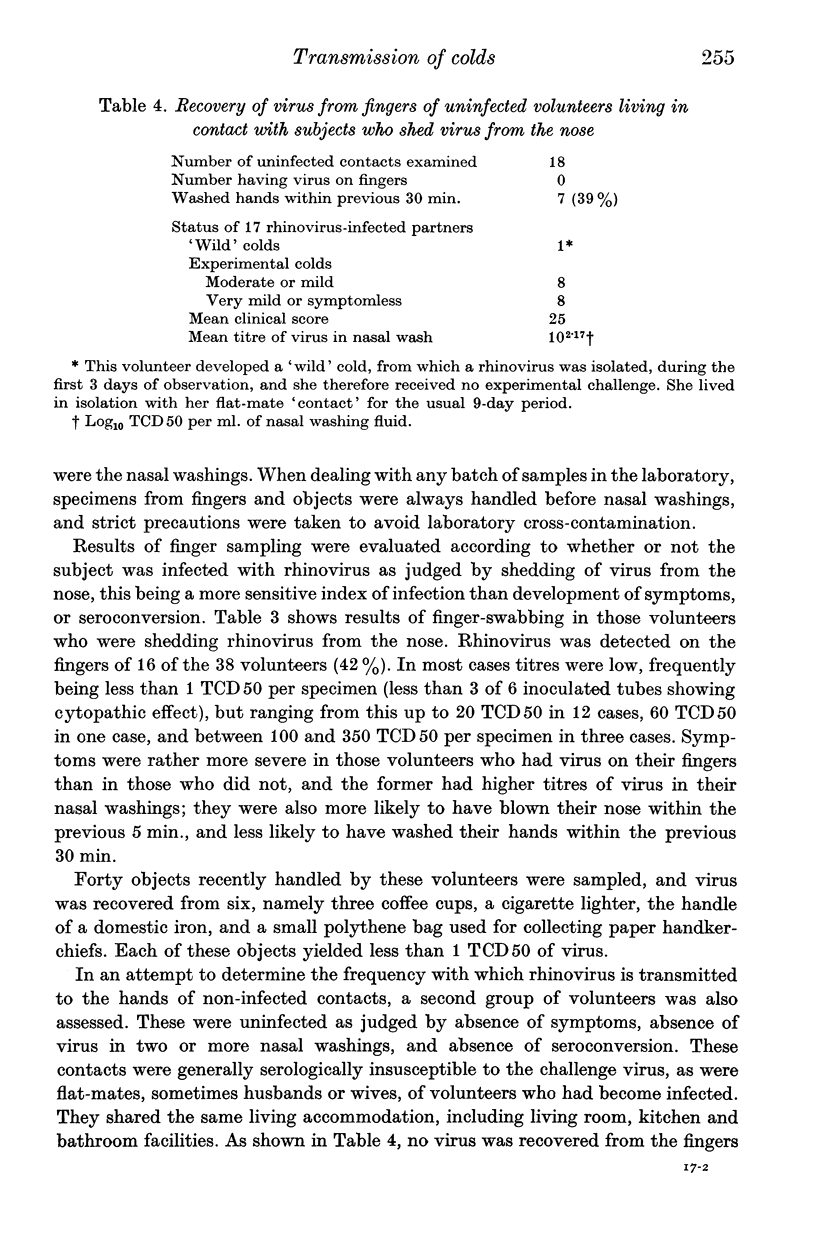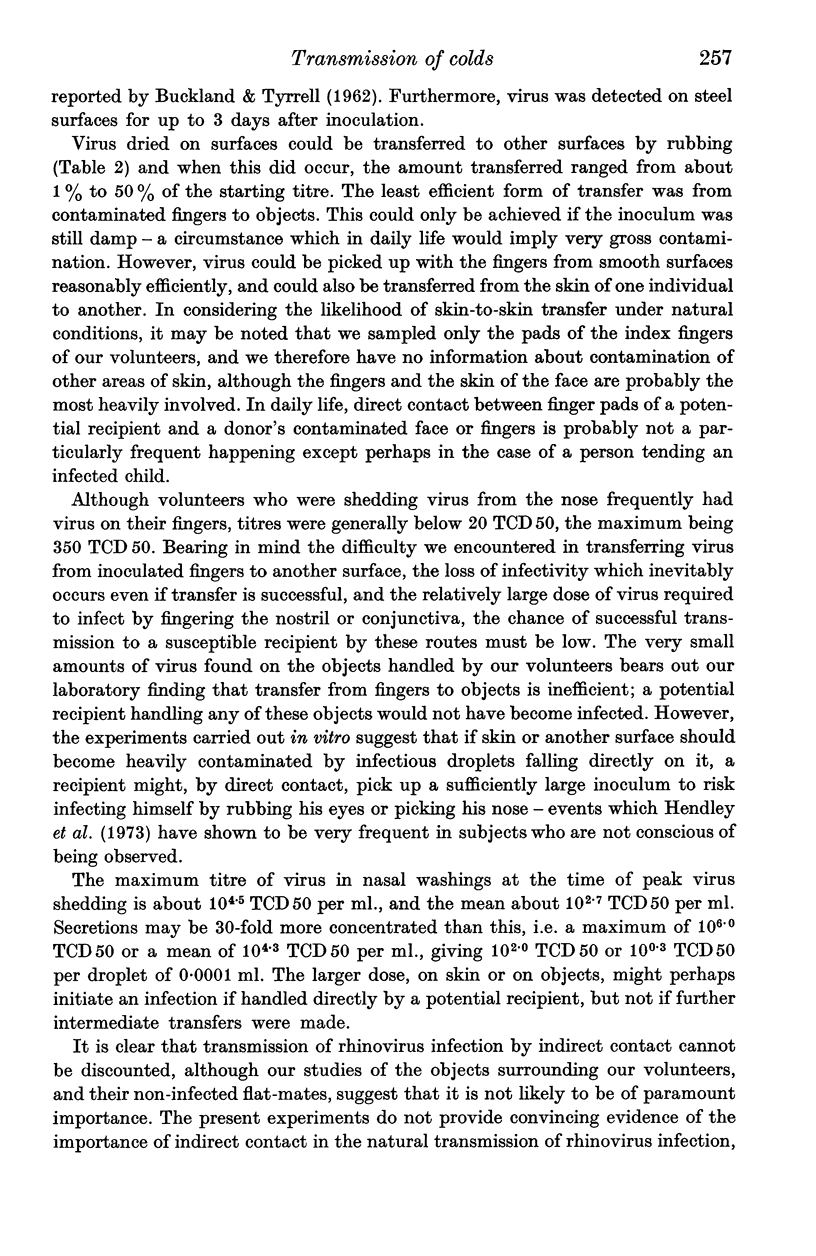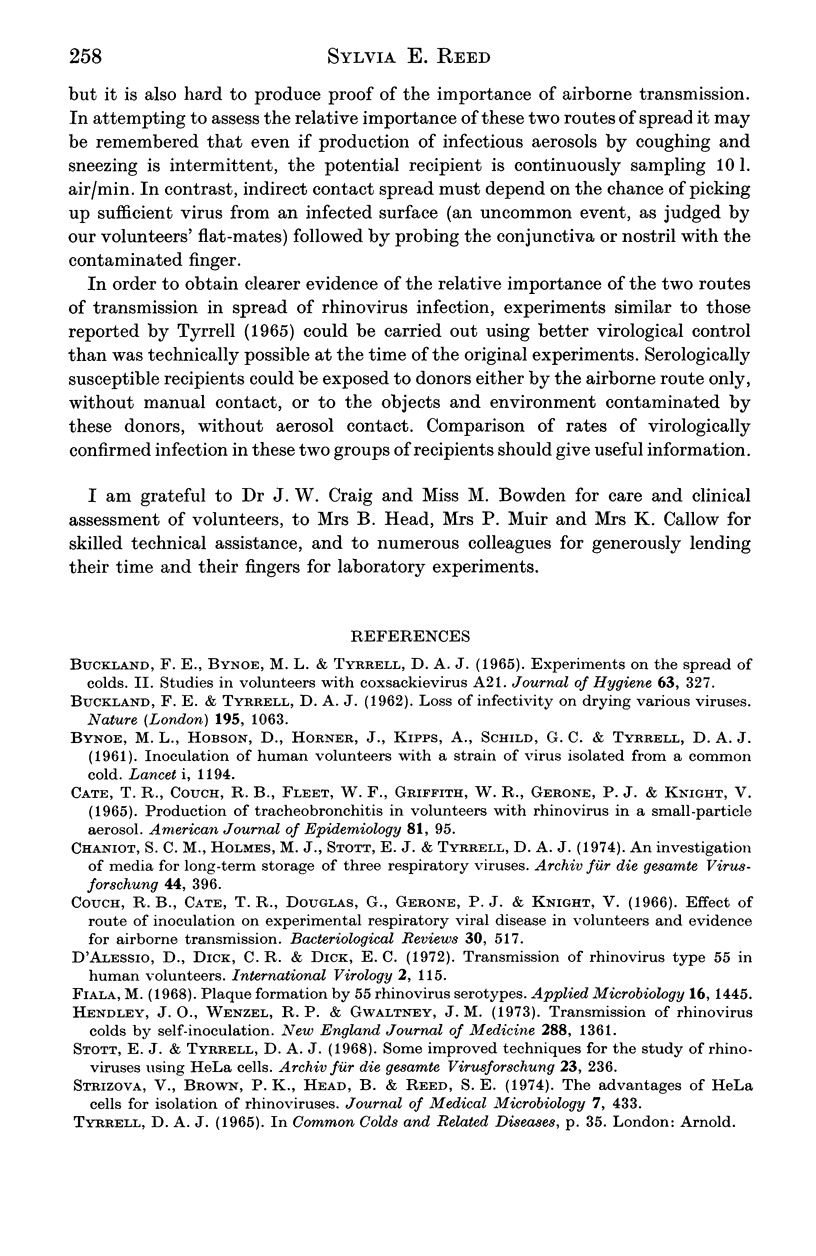Abstract
Rhinovirus was recovered from the fingers of 16 of 38 volunteers and others, who were swabbed during the acute stages of their colds. Very low titres of virus were also recovered from 6 of 40 objects recently handled by infected volunteers, but not from the fingers of 18 non-infected subjects whose flat-mates were shedding virus. When rhinovirus from nasal secretions was dried on skin or other surfaces during laboratory experiments, approximately 40-99% of infectivity was lost. Virus could be transferred from surface to surface by rubbing, the transfer being more efficient if it was carried out while the inoculum was still damp. Volunteers could infect themselves if a moderately heavy dose (88 TCD50) of virus was inoculated on the finger and then rubbed into the conjunctiva or nostril, especially if the inoculum was still damp. From estimates of virus titres in nasal washings and on fingers, and of amounts transferred by rubbing, it was concluded that apread of colds is unlikely to occur via objects contaminated by the hands of the virus-shedder, but that a receipient might pick up enough virus on his fingers by direct contact with heavily infected skin or secretions to constitute a risk of self-inoculation via the conjunctiva or nostril.
Full text
PDF









Selected References
These references are in PubMed. This may not be the complete list of references from this article.
- BUCKLAND F. E., TYRRELL D. A. Loss of infectivity on drying various viruses. Nature. 1962 Sep 15;195:1063–1064. doi: 10.1038/1951063a0. [DOI] [PubMed] [Google Scholar]
- BYNOE M. L., HOBSON D., HORNER J., KIPPS A., SCHILD G. C., TYRRELL D. A. Inoculation of human volunteers with a strain of virus isolated from a common cold. Lancet. 1961 Jun 3;1(7188):1194–1196. doi: 10.1016/s0140-6736(61)91941-9. [DOI] [PubMed] [Google Scholar]
- Buckland F. E., Bynoe M. L., Tyrrell D. A. Experiments on the spread of colds. II. Studies in volunteers with coxsackievirus A21. J Hyg (Lond) 1965 Sep;63(3):327–343. doi: 10.1017/s0022172400045228. [DOI] [PMC free article] [PubMed] [Google Scholar]
- CATE T. R., COUCH R. B., FLEET W. F., GRIFFITH W. R., GERONE P. J., KNIGHT V. PRODUCTION OF TRACHEOBRONCHITIS IN VOLUNTEERS WITH RHINOVIRUS IN A SMALL-PARTICLE AEROSOL. Am J Epidemiol. 1965 Jan;81:95–105. doi: 10.1093/oxfordjournals.aje.a120501. [DOI] [PubMed] [Google Scholar]
- Chaniot S. C., Holmes M. J., Stott E. J., Tyrrell D. A. An investigation of media for the long term storage of three respiratory viruses. Arch Gesamte Virusforsch. 1974;44(4):396–400. doi: 10.1007/BF01251022. [DOI] [PubMed] [Google Scholar]
- Couch R. B., Cate T. R., Douglas R. G., Jr, Gerone P. J., Knight V. Effect of route of inoculation on experimental respiratory viral disease in volunteers and evidence for airborne transmission. Bacteriol Rev. 1966 Sep;30(3):517–529. doi: 10.1128/br.30.3.517-529.1966. [DOI] [PMC free article] [PubMed] [Google Scholar]
- Fiala M. Plaque formation by 55 rhinovirus serotypes. Appl Microbiol. 1968 Oct;16(10):1445–1450. doi: 10.1128/am.16.10.1445-1450.1968. [DOI] [PMC free article] [PubMed] [Google Scholar]
- Hendley J. O., Wenzel R. P., Gwaltney J. M., Jr Transmission of rhinovirus colds by self-inoculation. N Engl J Med. 1973 Jun 28;288(26):1361–1364. doi: 10.1056/NEJM197306282882601. [DOI] [PubMed] [Google Scholar]
- Stott E. J., Tyrrell D. A. Some improved techniques for the study of rhinoviruses using HeLa cells. Arch Gesamte Virusforsch. 1968;23(3):236–244. doi: 10.1007/BF01241896. [DOI] [PubMed] [Google Scholar]
- Strizova V., Brown P. K., Head B., Reed S. E. The advantages of HeLa cells for isolation of rhinoviruses. J Med Microbiol. 1974 Nov;7(4):433–438. doi: 10.1099/00222615-7-4-433. [DOI] [PubMed] [Google Scholar]


